The volcano known as Mount Shasta is part of watersheds for three rivers in Northern California. The purity of the waters emanating from Mount Shasta has made the area a target for water and beverage bottling companies eager to profit from these resources.
Upon hearing the news about Crystal Geyser Water Company’s purchase of the empty Coca-Cola Mt. Shasta facility in October 2013, a group of concerned community members joined together and formed We Advocate Thorough Environmental Review, more commonly known as W.A.T.E.R. Having known about or actually experienced the many problems that occurred during the operation of the facility by Dannon Waters and Coca-Cola, these citizens worked to ensure that these problems would not reoccur.
Grassroots Citizen Engagement Worked! In May of 2021, CGWC revealed they would not open the plant and the property was put up for sale. By March of 2022 the property sold to a developer with the stipulation that it could not be used to produce and distribute water beverage products. The final victory came just one month later when California Ninth District Appellate Court invalidated a woefully inadequate Environmental Impact Report that had been prepared for the CGWC plant, putting the final nail in the coffin of the beverage bottling project. The following recounts the history of the community’s and W.A.T.E.R.’s efforts that led to this tremendous victory for our region and links the past to our future work.
2000 - 2010 The Dannon Waters/Coca-Cola Years
The water and beverage bottling plant on Ski Village Drive in Mount Shasta, CA has been controversial since it was first built. Originally opened by Dannon Waters in 2001 to bottle "spring water" from its production wells and then later acquired by Cola-Cola, the plant generated much opposition from concerned local citizens because of the overwhelming lack of environmental oversight and protection from County and City officials. In December 2000, the County Board of Supervisors had refused to consider an environmental review of the proposed Dannon plant although it is required by the California Environmental Quality Act and despite the objections from citizens groups. Later that month, several Mt. Shasta citizens filed a lawsuit challenging the County and Dannon over planned operations without any environmental review. Lawyers from Dannon subsequently threatened the citizens filing the lawsuit and, fearing these reprisals from the company, the citizens dropped the lawsuit.
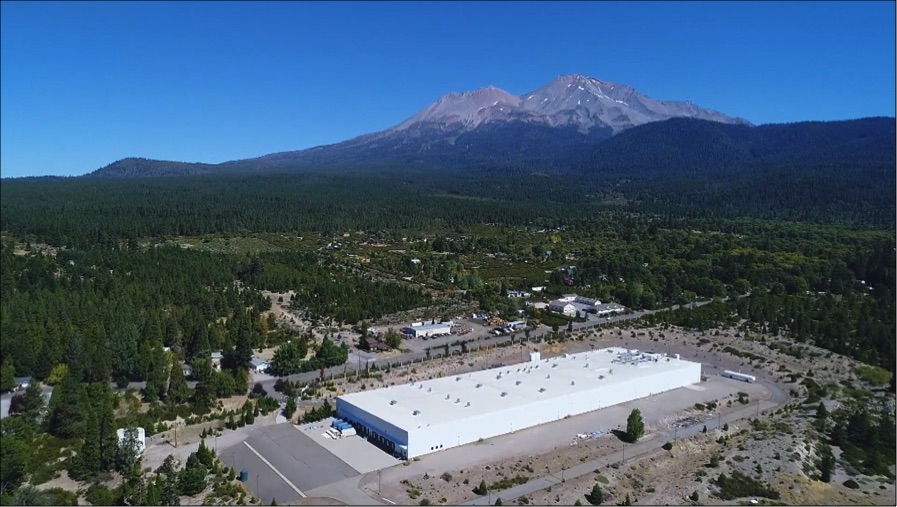
In January 2001, Dannon began operations piping rinse water into the Mount Shasta waste treatment system. However, the Mt. Shasta treatment plant was unable to handle the increased flow, so Dannon applied for a permit from the State Water Board to build an on-site leach field. In May 2001, Dannon was required by the Central Valley Regional Water Quality Control Board (CVRWQCB), as lead agency, to conduct an initial study of the environmental effects of its facility, as a condition for a permit for its on-site disposal of bottle rinse water. At the CVRWQCB public scoping meeting on Dannon's plant operations, approximately 100 people voiced their concerns about the effects on the local water supplies, plant noise, traffic, lighting, aesthetics, and future expansion. In spite of these concerns, in September 2001, Dannon received a permit to discharge thousands of gallons of plastic bottle rinse water into its leach field. The CVRWQCB adopted a list of environmental mitigation measures to be followed during Dannon' s leach field construction and operation. In October 2001 the Mount Shasta Bioregional Ecology Center filed a petition challenging the CVRWQCB issuing a negative mitigated declaration on Dannon's operations. All of the citizen's complaints and organizations objections were ignored. Ongoing complaints from neighbors about well problems, noise and vibration, nighttime lighting, and traffic were also ignored. The plant was later acquired by Cola-Cola and operations continued. In 2010 the plant was closed and Cola-Cola sold the equipment and shuttered the empty building.
“Market conditions and overcapacity in the bottled water industry have led Coca Cola North America to exit their lower margin retail spring water facilities at the end of this year,” CCDA Spokesperson Ray Crockett said on Friday, April 23 (2010). “We will cease production of our private customer labels and Aquarius Spring retail products.” Many in the community were very pleased, and wells negatively affected by the pumping recovered.
2013 to Present Crystal Geyser Water Company
In October 2013 the public found out that Coca-Cola had sold the empty building and surrounding properties with the production wells to Crystal Geyser Water Company (CGWC), a subsidiary of Otsuka Pharmaceutical of Japan. CGWC announced it was planning to open a tea and carbonated fruit juice bottling plant in the old building. It was also announced that Mt. Shasta City and CGWC were partners in a $3 million Economic Development Administration (EDA) grant with an additional $3 million of matching funds from CGWC (it was later revealed that the $3 million matching funds were actually being contributed by the City, since it was in lieu of a $3 million sewer hookup fee CGWC would otherwise have to pay). The funds were to upgrade the sewer interceptor line to handle the extra sewage from the tea and fruit drink waste from the CGWC plant. A kerfuffle resulting from the announcement by a city councilmember stating that the funds would be partially used for an Environmental Impact Report (EIR) caused the EDA to withdraw the grant award for this project.
Local citizens immediately began a campaign to challenge this corporate privatization of groundwater by CGWC and to insist that this new plant and sewer hookup be subject to an EIR because of the likelihood that significant negative impacts would occur from plastic, air, and water pollution, as well as traffic, noise, and over-pumping and degradation of the underlying aquifer. Starting as a collaboration of representatives from several community groups, W.A.T.E.R. incorporated as a 501(c)(3) California non-profit public benefit corporation in March 2015.
Initially, the County Board of Supervisors claimed that no EIR was required and ignored all arguments to the contrary. Through legal action contesting zoning and after we spearheaded significant public outcry, in September 2015 Siskiyou County finally announced it would perform an Environmental Impact Review (EIR) for the CGWC project. This was transformative because it was the first indication our work with the community had a significant impact. We now had the attention of local governing agencies and became recognized as positive contributors to our community.
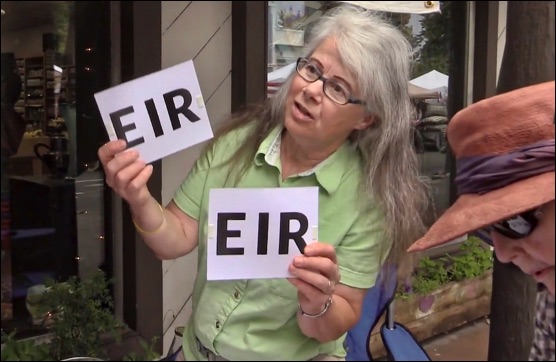
W.A.T.E.R. chose to use the power of the California Environmental Quality Act (CEQA) to further engage the public in the environmental review process. However, since no state agency enforces the Act, enforcement is incumbent either upon local agencies which often shy away from challenging corporate power or are easily influenced by the often unfulfilled promise of jobs and economic benefits, or else upon the public and citizens' groups who are less timid. CEQA has clearly defined steps for public input, and we successfully engaged our fellow citizens to write letters, submit comments on the EIR and comment at public hearings. W.A.T.E.R.’s own analysis of the EIR revealed the many inadequacies being presented in the attempt to justify the project and falsely assert no significant impacts would occur.
Tabling for EIR Campaign
Central to our work has been the participation of the larger community. The beauty of our area attracts many environmentally conscious residents, business owners and visitors. We engaged with the community through our e-newsletter, website, Facebook page, and with videos. The community proved itself to be very supportive and generous to W.A.T.E.R., providing over seventy-five percent of our income during the first three years of our efforts and over fifty percent more recently. In 2017, the Gateway Neighborhood Association, representing the neighborhood where Crystal Geyser intends to operate, held a fundraising raffle to help support W.A.T.E.R.’s work. Many local businesses donated the prizes for the raffle.
We have also organized face-to-face gatherings with the community (also here) to communicate our findings about the issues and also get their feedback to ensure we are truly representing their interests. We hired additional legal, economic and environmental experts to respond further to the environmental study conducted by the County.
Despite the great effort expended, the volumes of comments submitted pointing out the many errors in the EIR and expert testimony to the Planning Commission reinforcing our analysis, the Commission voted to approve the project regardless. We submitted an appeal of this decision to the Siskiyou County Board of Supervisors who denied the appeal and the project was approved with only minor and superficial changes. This actually came as no surprise as our local elected leaders are predominantly pro-corporate but it is beyond challenging to get these leaders to realize that when externalities are taken into account, the profitability of extractive industries and the perceived benefits to society are lost. Unfortunately, it is only when we initiate a legal challenge that they pay attention.
Selling Raffle Tickets
The EIR contained numerous inadequacies in analyses concerning the impacts of air pollution, greenhouse gas emissions, noise, and hazardous materials, as well as impacts to hydrology and aesthetics including light pollution of the night sky. Furthermore, the land and waters around Mount Shasta are sacred cultural resources for the Winnemem Wintu Tribe, yet the Tribe’s right to protect these resources has been blatantly ignored. We collaborated closely with the Winnemem Wintu Tribe as co-petitioners in a legal challenge to the CGWC project filed against Siskiyou County and CGWC.
W.A.T.E.R. and the Tribe also partnered in another lawsuit challenging an Industrial User Wastewater Discharge permit issued by Mount Shasta City allowing CGWC a connection to the wastewater treatment system since the permit was based on the flawed EIR. This permit application had disclosed the intended use of additional noxious chemicals never analyzed in the EIR.
A motion to join these two lawsuits was denied due to an objection by CGWC’s lawyer resulting in a doubling of our anticipated legal fees. We believe this objection was intended to drain W.A.T.E.R. of financial resources (it hasn't worked). Briefs were filed for our first case against Siskiyou County and CGWC with the case heard on May 10, 2019. Briefs for our case against the Mt. Shasta City Wastewater Permit were also filed and the hearing held on June 7, 2019.
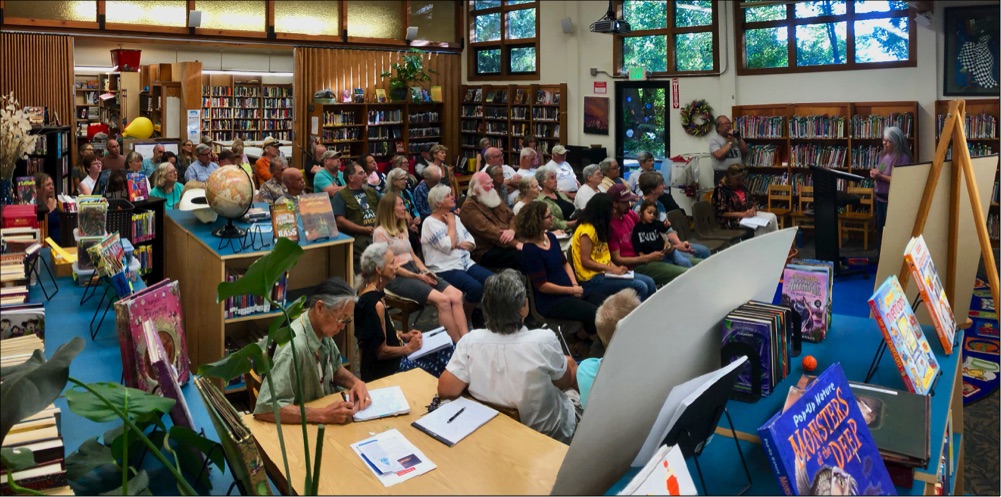
W.A.T.E.R. Community Forum June 18, 2019

On August 29, 2019, Judge Karen L. Dixon issued her ruling on the case against Siskiyou County and Crystal Geyser Water Company denying our petition. On October 17, 2019 Judge Dixon also denied the petition against the City of Mt. Shasta and CGWC.
The Court’s Statements did not really address the major issues raised in our Petition. The ruling, without much basis in either science or legality, basically rubber-stamps the grossly inadequate EIR, which itself virtually ignored the environmental issues raised by the community. We were convinced that the Court's decision against our challenge to the County’s EIR was legally questionable, in defense of an EIR that was unscientific, incomplete, and essentially deceptive. It attempted to pave a path toward a project that likely would have been damaging to the environment and to the health of the community and only serve the profit interests of a multinational pharmaceutical corporation based in Japan. Thus W.A.T.E.R. filed notices of appeal for both cases, and opening briefs were submitted to the Third Appellate District Court in Sacramento on April 16, 2021.
In a very exciting and interesting twist, in May of 2021, CGWC revealed they would not open the plant and the property was put up for sale. By March of 2022 the property sold to a developer with the stipulation that it could not be used to produce and distribute water beverage products. The final victory came in April, 2022, when the Ninth District Appellate court ruled in our favor and invalidated the County’s EIR and the City’s waste water permit.
This was a huge victory for all of the community members and others concerned about our mountain environment and the type of development suitable for our community. None of this would have been possible without W.A.T.E.R.’s dedicated volunteers, community support, well attended public meetings, EIR comments, grants and financial donations. This outcome demonstrates that grassroots citizen engagement works!
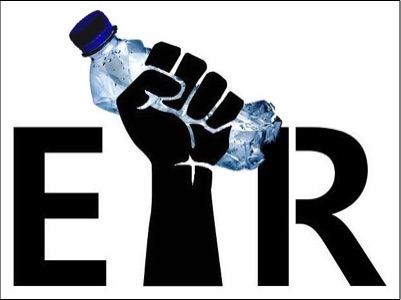
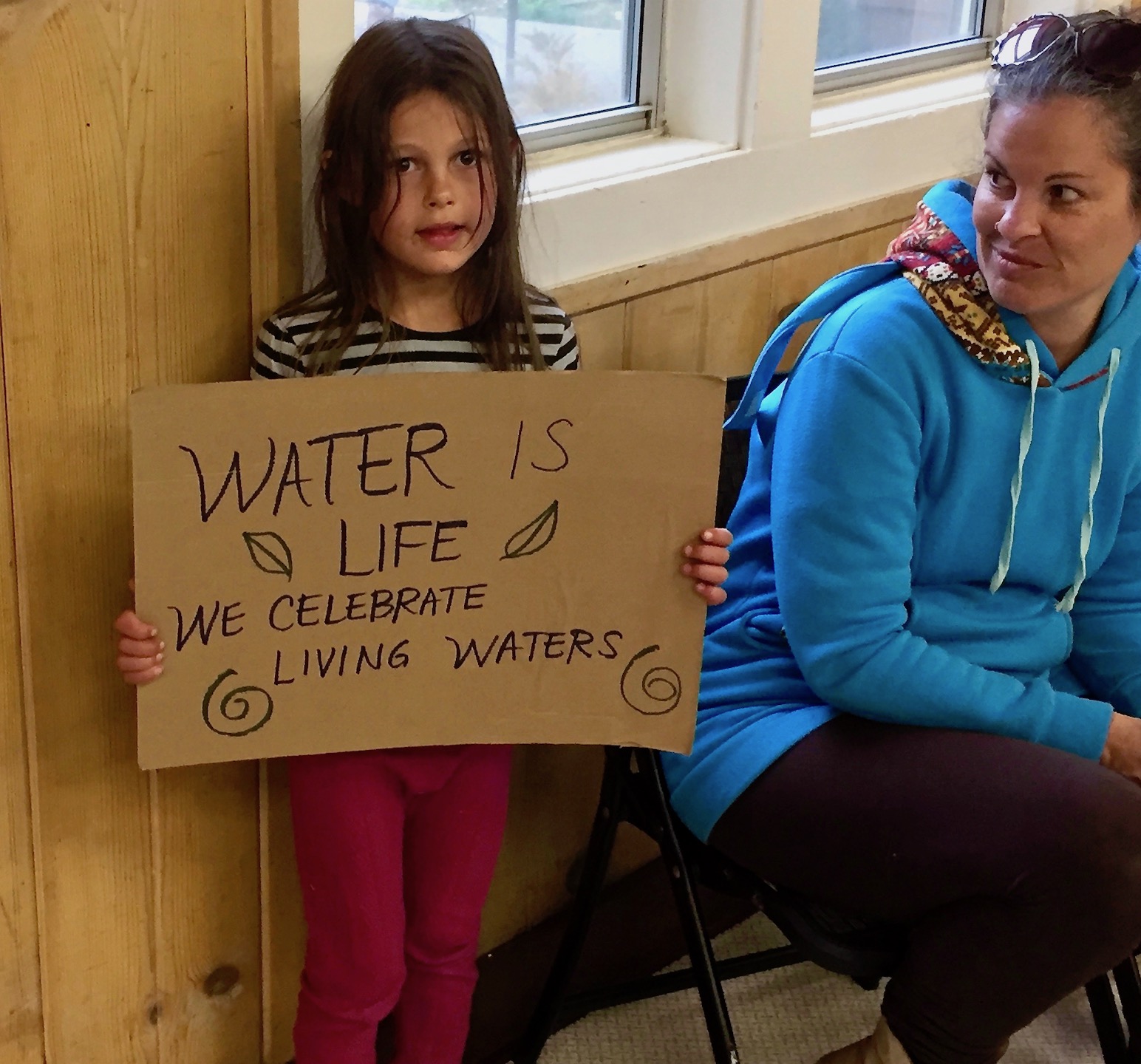
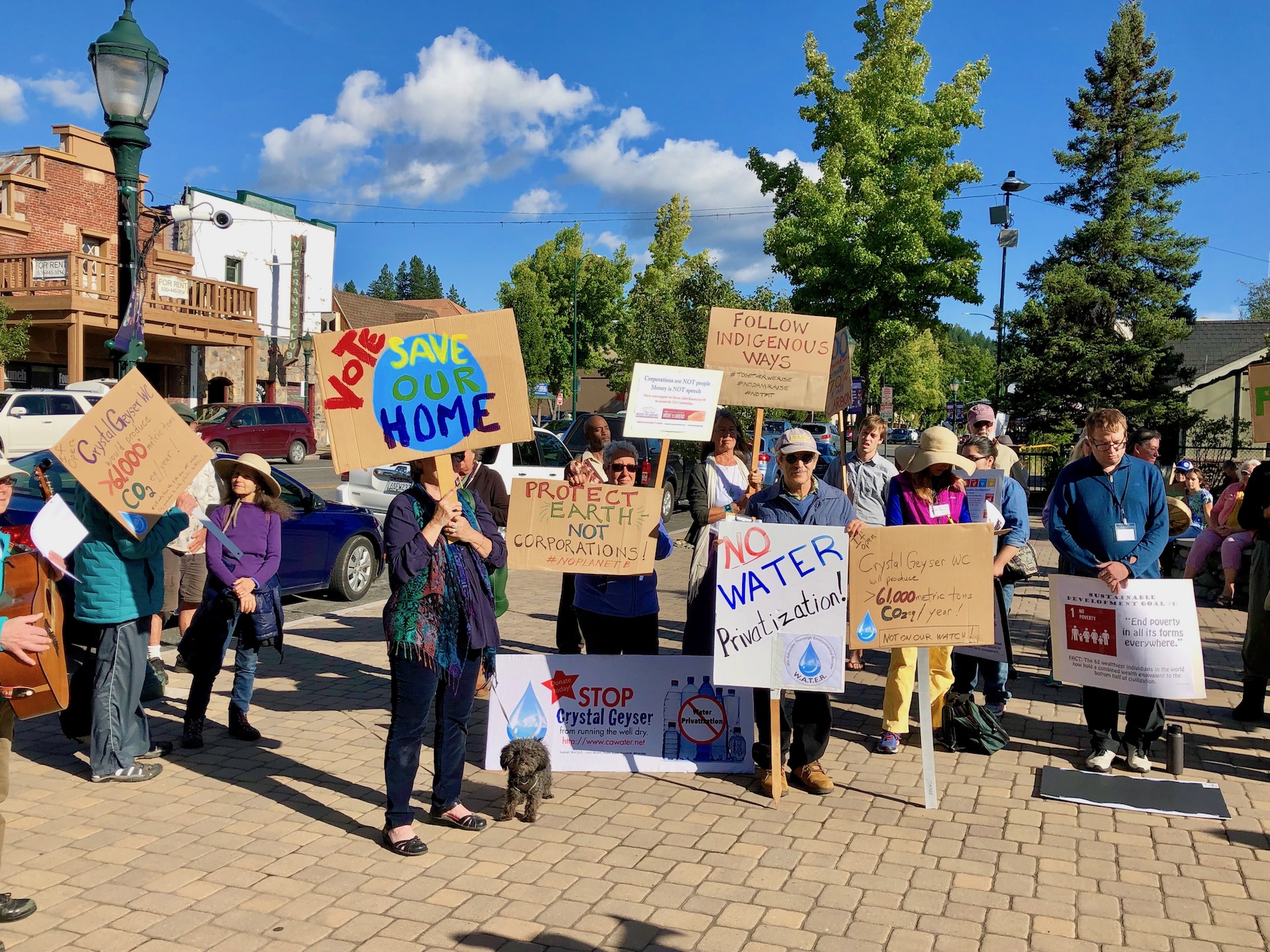
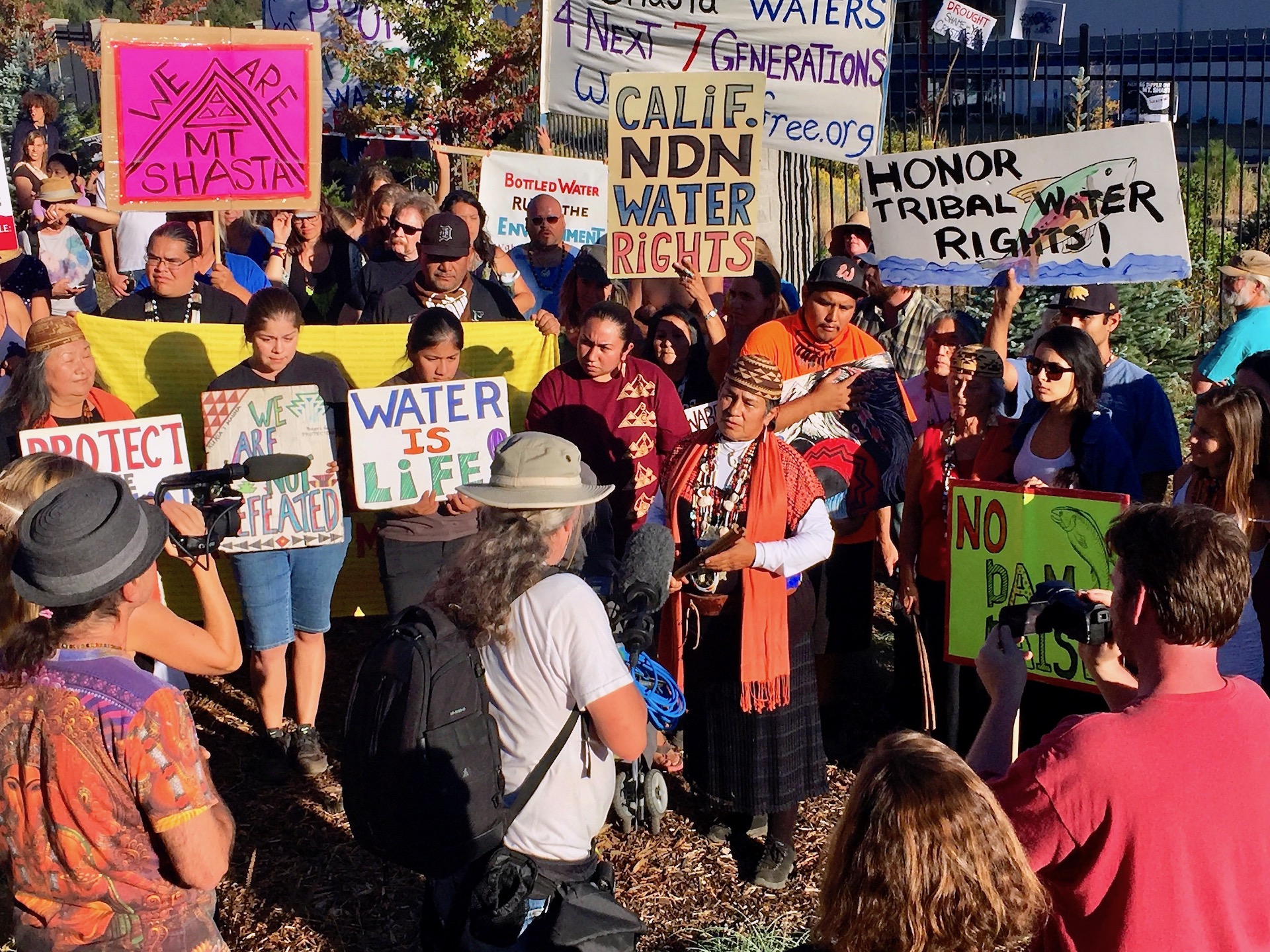
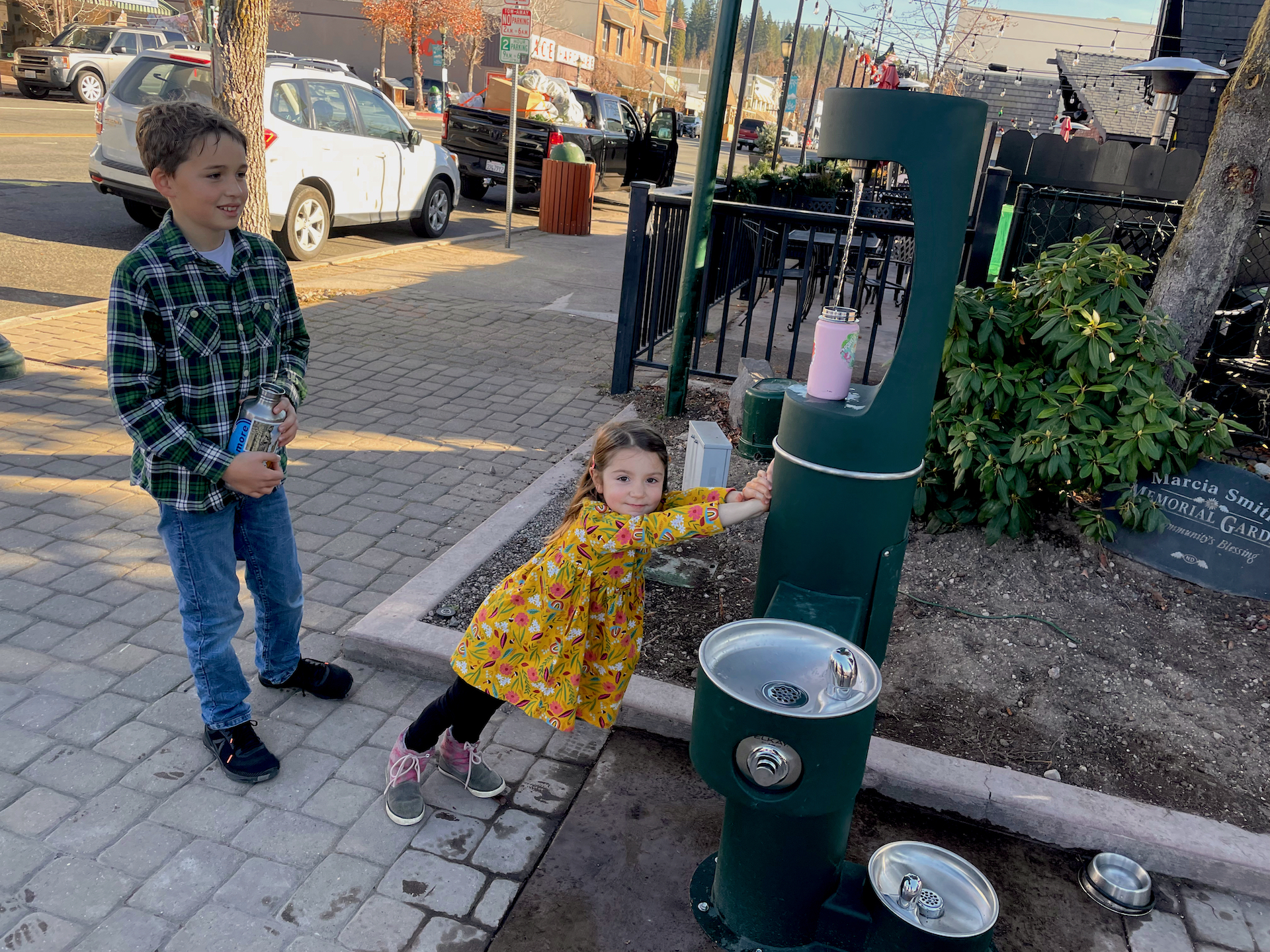
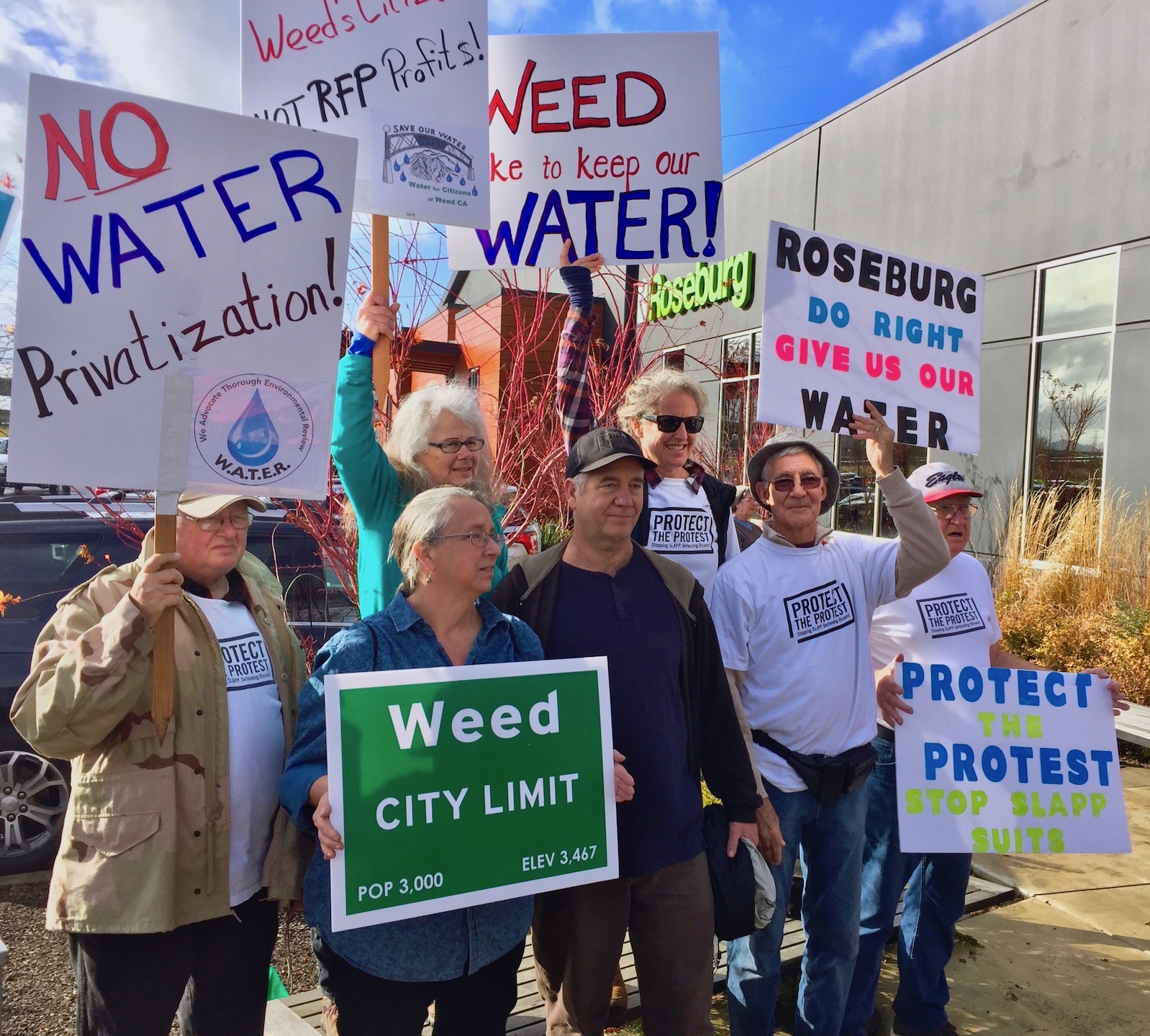
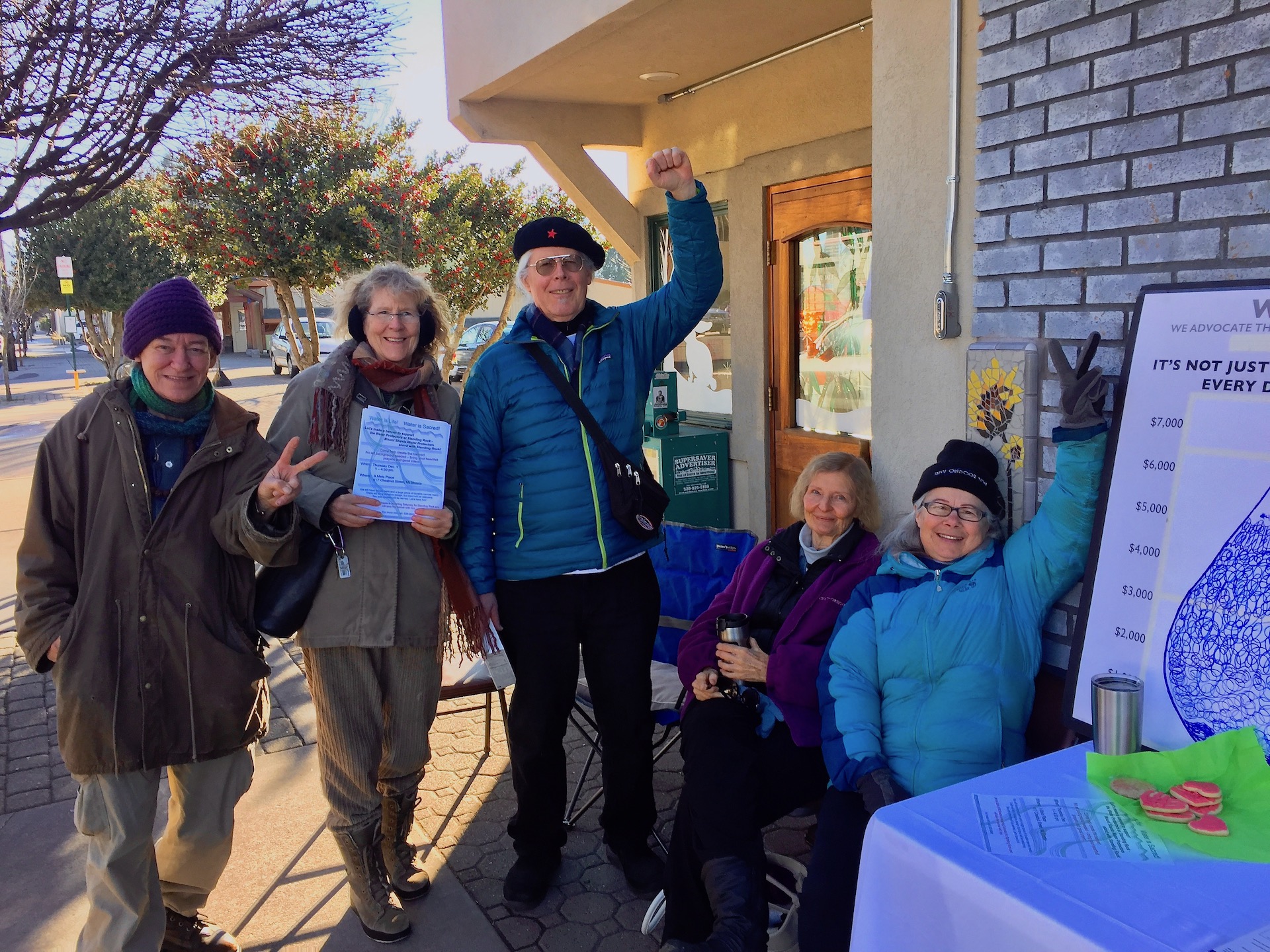
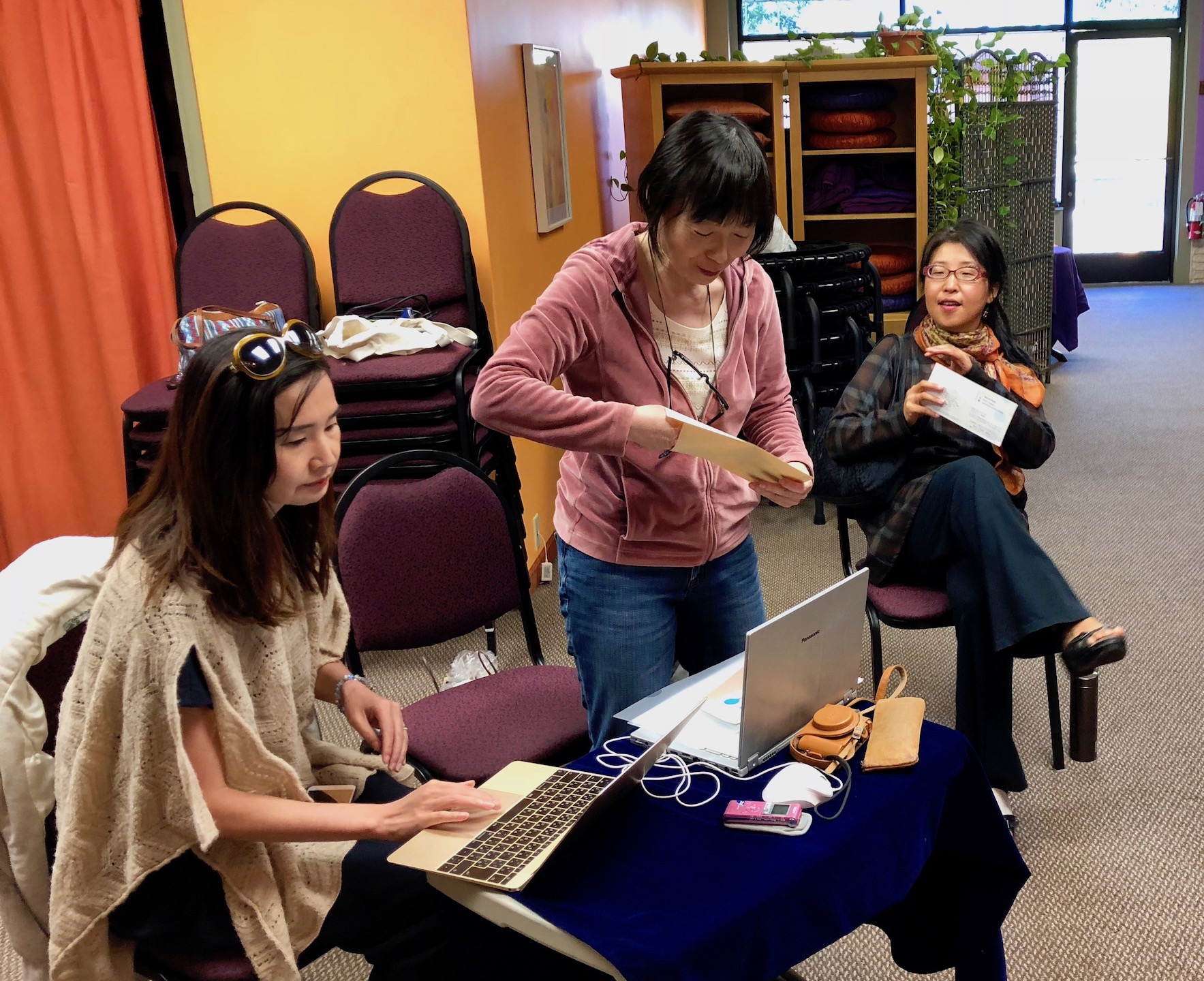

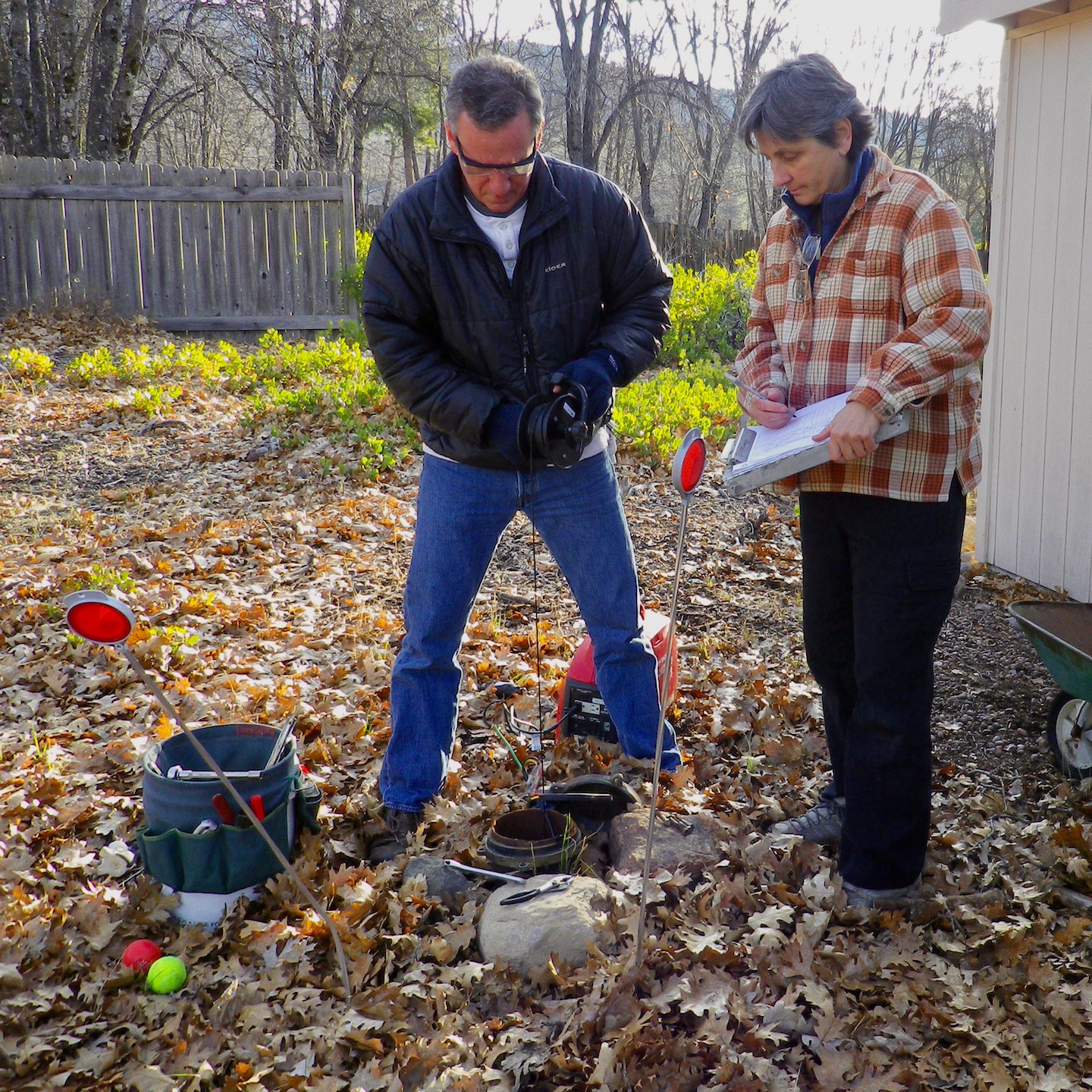
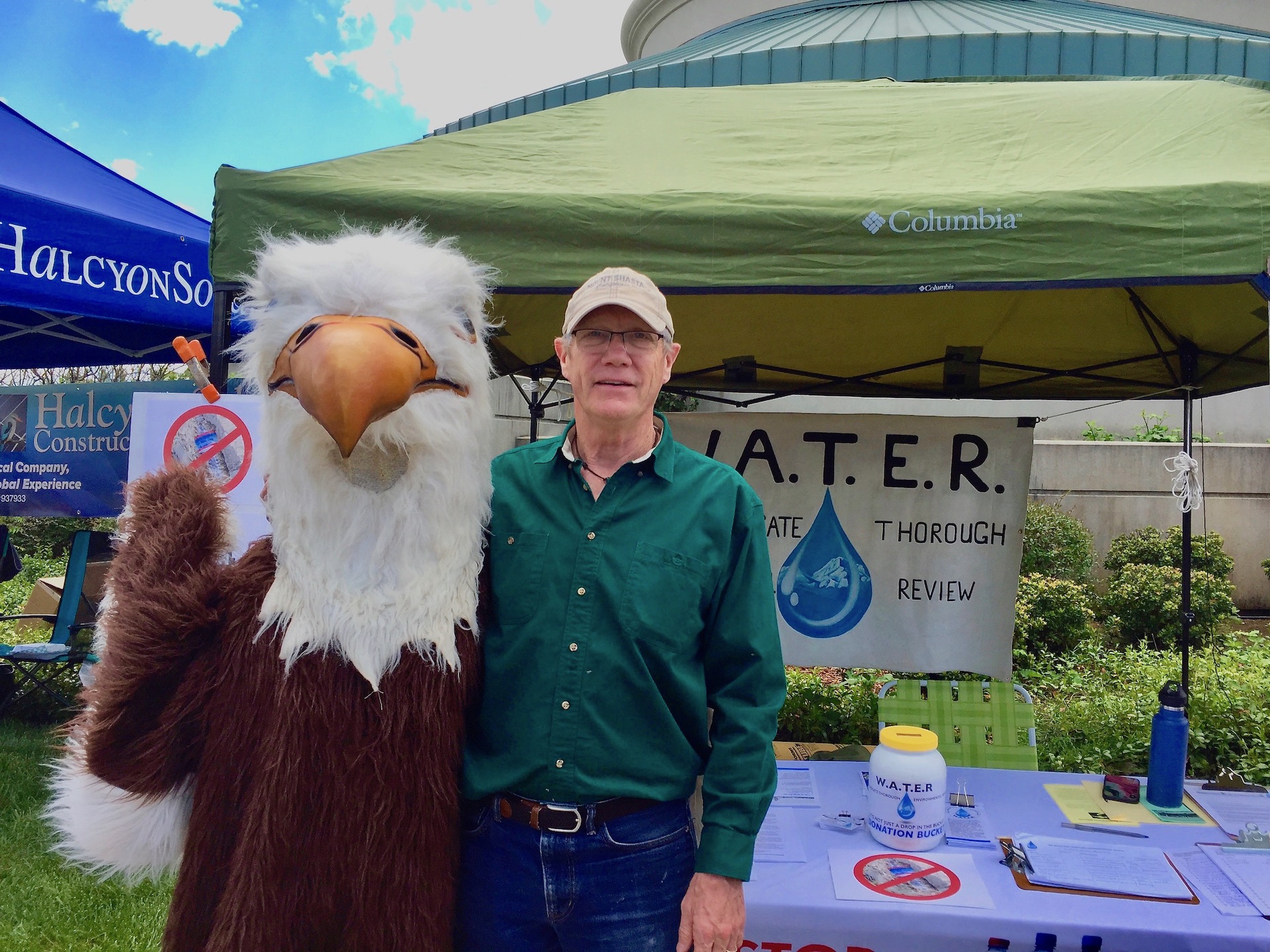
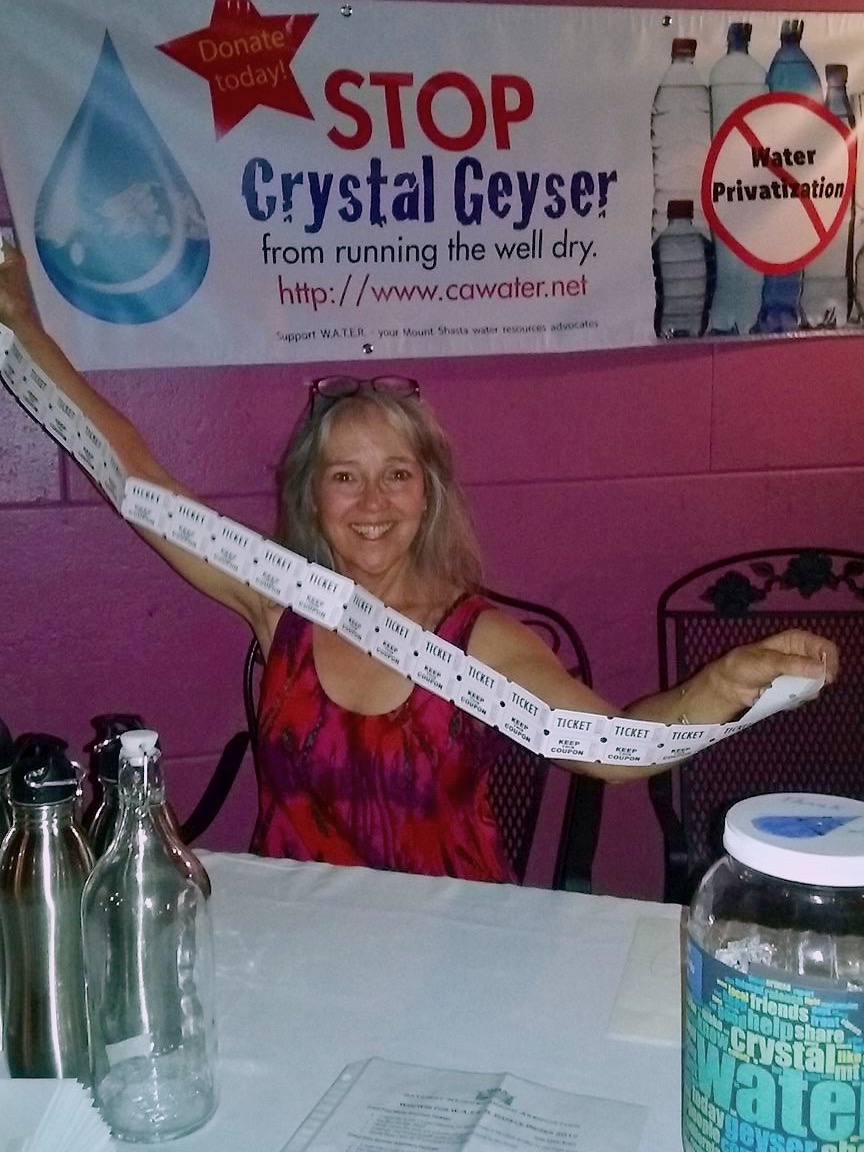
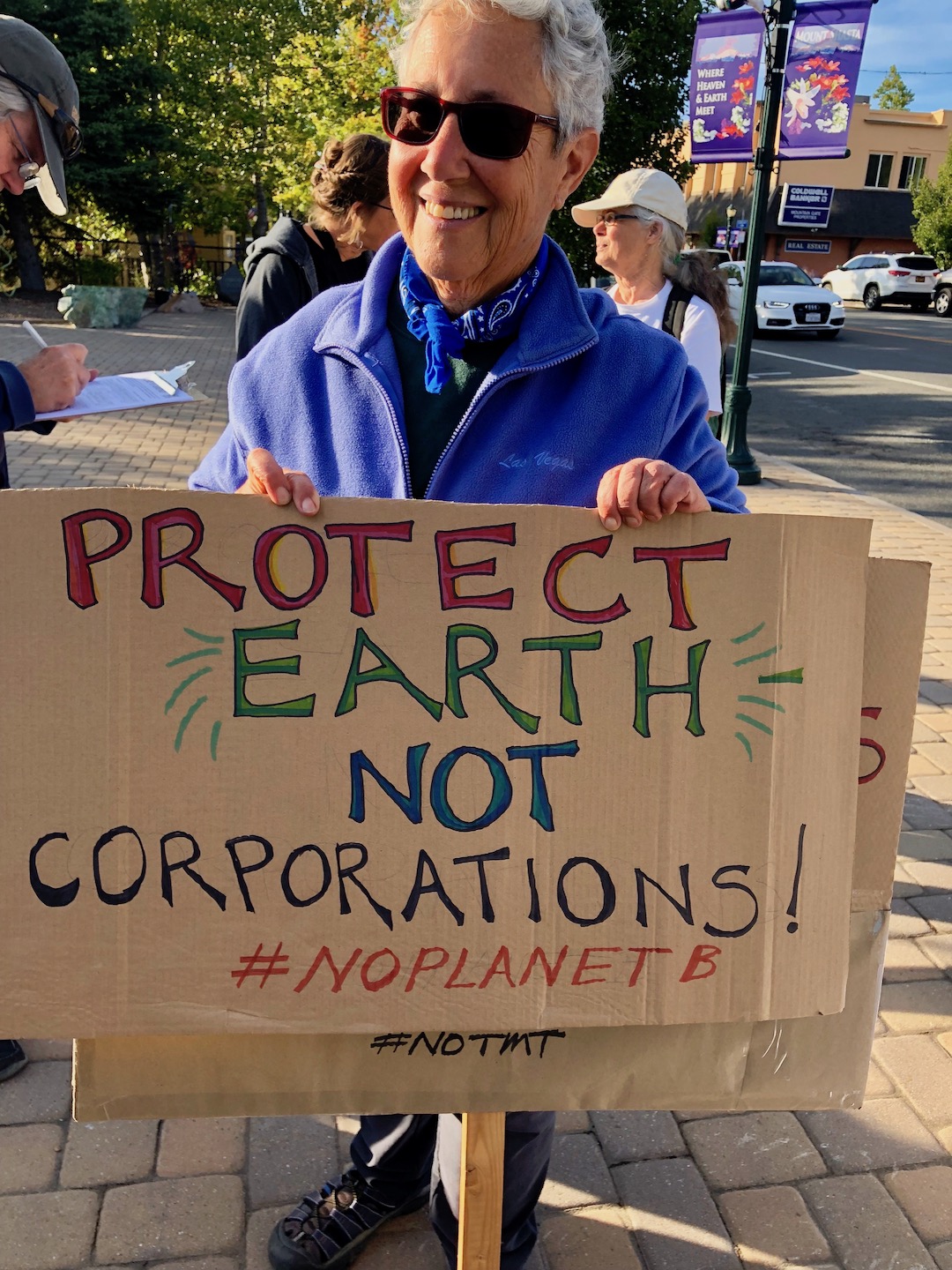

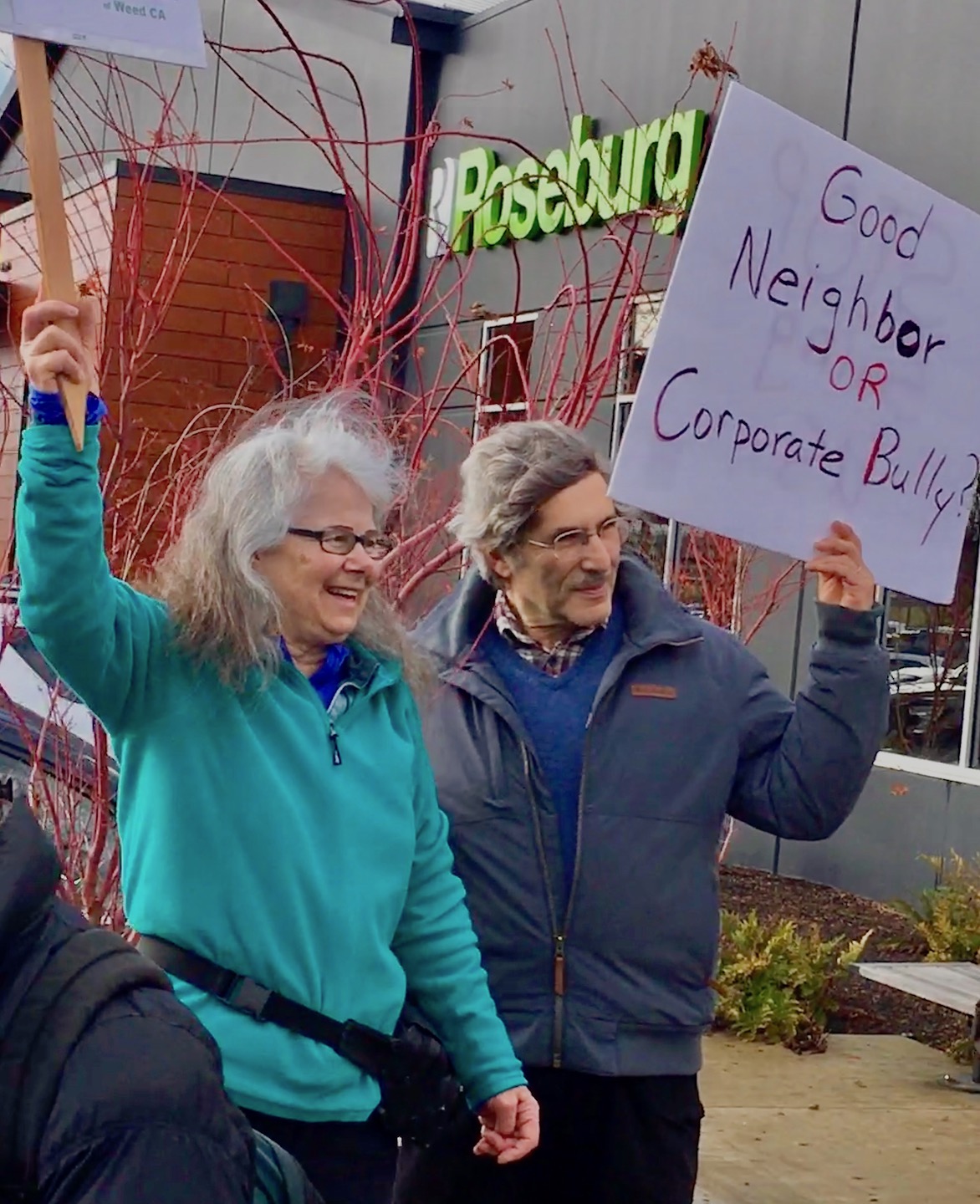
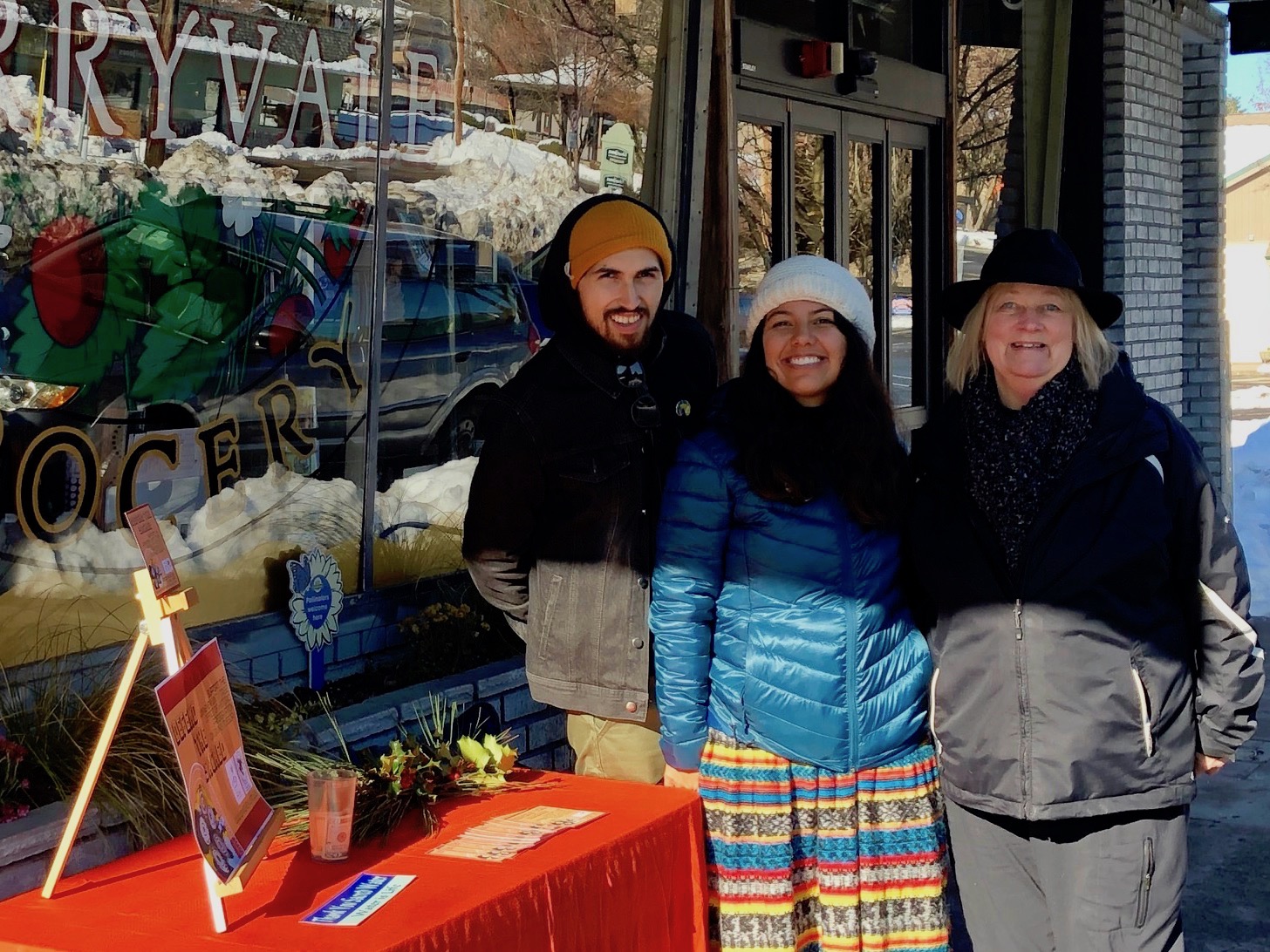
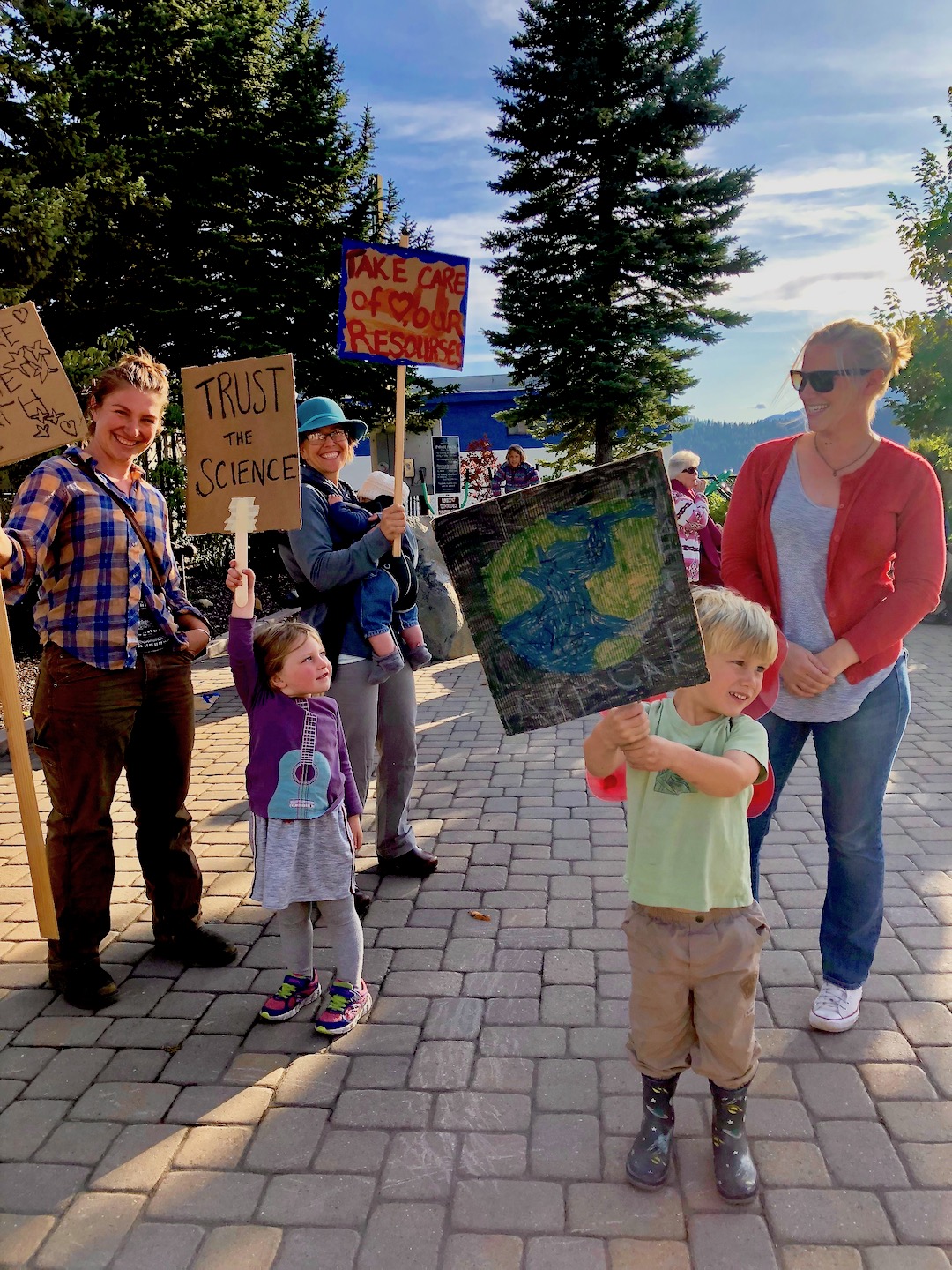

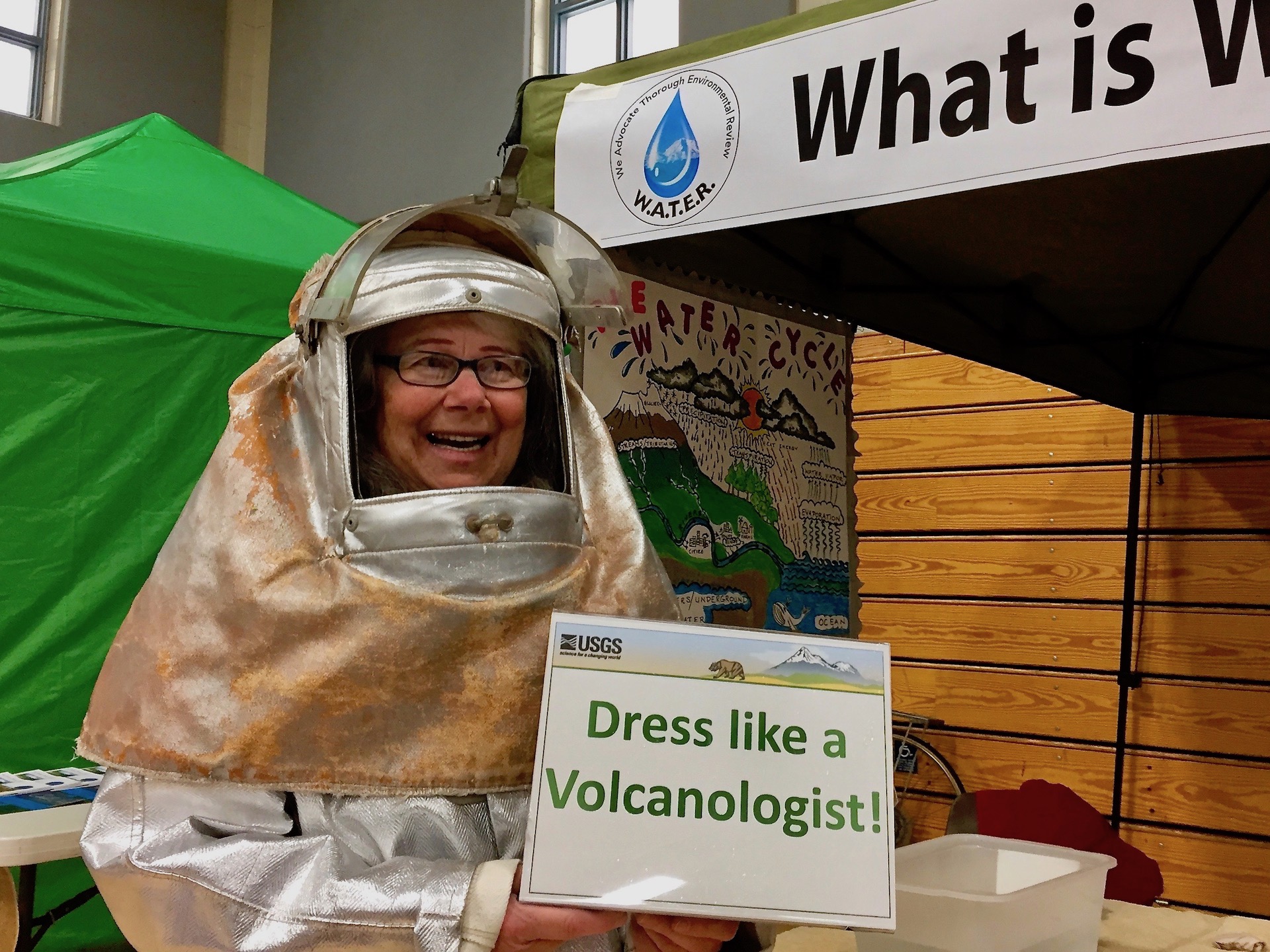
Click On Image to Enlarge
Hover Over Image To Pause
Colin Stewart / David Donica
Expanding Our Outreach
Using what we have learned from the CGWC project, we have also participated in the CEQA process for several other projects around our area: the proposed Lassen substation upgrade to area power infrastructure (2018), a proposed water bottling operation in McCloud (2018), upgrades to Mt. Shasta City’s wastewater infrastructure (2015, 2019), a proposed truck stop in Weed, CA (2018), a proposed car wash and storage facility in Mt. Shasta (2017, 2019), the proposed raising of the Shasta Dam (2019), and the state’s proposed Delta Conveyance project (2020). In addition, we are promoting plastic pollution reduction and establishing local water quality and air quality monitoring systems. Several of these projects are on-going; please read more on our Projects page.
In order to maximize our impact in our area, we have developed ties with several other local, regional and state organizations. From our inception, we have collaborated with the Gateway Neighborhood association, representing the residents surrounding the CGWC plant, to protect their neighborhood from the social and environmental impacts of the plant. We were originally “umbrellaed” by the Mt. Shasta Bioregional Ecology Center until our incorporation as a separate non-profit group in 2015. We have supported the work of citizens’ groups in Weed and McCloud, in their effort to protect their municipal water resources from privatization. We are members of the Upper Sacramento Regional Water Action Group (since March 2018), a collection of local agencies, NGOs and Tribes that identify and implement water infrastructure upgrade projects. We are a supporting organization for the Shasta Environmental Alliance (since March 2019), an alliance of organization in Siskiyou, Shasta, and Tehama Counties working to protect our regional environment. As an endorsing organization for the National Move to Amend movement, we support an amendment to the US Constitution that ends corporate personhood and money as free speech as a necessity to ensure the public's right to democratic participation in civic, economic and political matters. We are a member of the NGO Groundwater Collaborative (since 2016) a statewide collaborative effort to influence state legislation to protect groundwater resources. We are co-petitioners with the Winemem Wintu Tribe in our court cases against CGWC, Siskiyou County, and the City of Mt. Shasta. Please read more about these groups by visiting our Allies page.
W.A.T.E.R.’s Work is NOT Over
W.A.T.E.R.’s Board of Directors, in anticipation of some kind of resolution of the CGWC project, began a strategic planning process in 2019 that culminated in the development of a five year strategic plan adopted in November of 2021, entitled, “Vision Into Action: Pathways to a Sustainable Future” [view here]. Our work over more than eight years has clarified for us the following realities:
• The climate crisis is the most urgent existential threat to humanity.
• “Environmentalism” in the 21st century cannot exist without addressing economic and social justice issues.
• Achieving social, economic, environmental, and climate justice requires confronting the dysfunctional economic and political systems that are
ruining the planet and stonewalling efforts to change.
• Local issues are not strictly local; they are impacted by what happens regionally, statewide, nationally, and globally. And what we do in our
communities can have far-reaching impacts around the globe.
• It is a moral obligation to protect Mount Shasta’s water and other natural attributes.
• W.A.T.E.R.’s internal governance system must reflect the inclusion, equity, and justice we wish to see in the larger society.
In these lessons, W.A.T.E.R. will continue to work to protect our region from activities that threaten to degrade the quality of life and the environment in our communities and on the planet.

